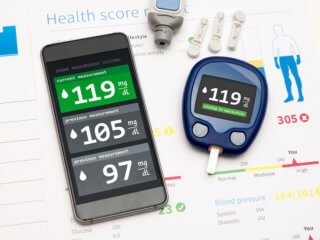Clinical Decision Support Systems (CDSS) have the capability to deliver the best health care decisions by having the necessary information at the suitable time so that health care doctors & practitioners can provide the best treatment for their patient’s requirements. Clinical decisions that doctors choose due to clinical decision support systems are beneficial and accurate due to the number of tools available. Doctors can now receive the necessary information with a list of possible prognosis, treatments, and alerts for any patient’s condition.
As the field of health care is getting more and more complicated, there are continuously new guidelines in how to conduct precise treatments. Clinical decision support gives doctors and medical specialists that little edge to make better decisions based on the information updated considering the new guidelines and rules.
The first wave of medical decision support systems
Since the birth of the pharmaceutical industry, clinicians have perceived the significance of up-to-date clinical decision making. Regrettably, for a long time, effective methods for researching and evaluating such methods were relatively rare. Health care specialists regularly depended on extensive research and manual records to build up the essential knowledge for an informed decision. Indeed, this proved to be both very time consuming and error prone and. Luckily, the development of computer technology in the 1980s gave doctors a secure system for analyzing patient data and possible courses of treatment. And thus, CDSS was born. Early systems strictly based on the user’s input and decided a course of action. The user would input any essential information, and the system would output a final decision, which in turn would be the user’s course of action.
The 1st generation of CDSS focused on diagnostic support to the physicians or doctors. Differential diagnostic tools, like the DXPlain, utilize the Bayesian inference decision process to consider one piece of clinical finding (such as lab result or a symptom) at a time and then compute the statistical probabilities of various possible diagnoses. The knowledge bases of such system are massive arrays of prior probabilities connecting clinical findings to diagnoses. One favorite example of initial CDSS is MYCIN.
MYCIN: This was first developed in the 1970s as a means for distinguishing infectious ailments and prescribing antibiotics for treatment. A different part of MYCIN was its importance on artificial intelligence (AI). It’s AI model was built through a rule-based system, in which approximately 200 rules (and counting) were applied to the system, shaping the knowledge base. Unfortunately, there were many significant complications with MYCIN. Firstly, it operated very slowly, with an accurate analysis requiring 30 minutes or more. Secondly, there was apprehension over whether clinicians ran the risk of putting excessive trust in computerized results at the cost of their inquiry and judgment.
| Recommended for you | |
| Social media predicts biomedical outcomes using big data | |
| Gartner Hype cycle in health care decision making | |
| Deep learning in health care |
Clinical decision support systems today
The 2nd generation of clinical decision support tools aims to enhance the workflow and convenience. A revolutionary product in this category is Isabel. Isabel has two remarkable innovations. First, it captures a natural language patient summary from the doctor notes in the EHR, distinguishes keywords and findings contained in the synopsis, and then produces a list of related results from its probabilities database. Second, Isabel files distributed medical literature for treatment alternatives for each diagnosis, and it makes treatment propositions to the doctor together with findings. The natural language process in both parsing the doctor notes and medical literature is a substantial innovation that makes Isabel engaging.
However, even with Isabel, it is still frequently too slow to extract doctor notes automatically and then look for answers. Isabel’s diagnoses are precise when bulk paragraphs of notes or text are used, but the accuracy falls meaningfully when the input contains less text. For a trained medical expert, a better approach to resolve a difficulty finding or to locate another treatment will be asking a more experienced physician.
The role of IT is increasingly vital in health care services across North America and Europe. This trend is probably not going to change in the future as clinical systems have been leveraging health care markets. The NHS Care Records Program is the most efficient governmental initiative in the UK and aims to provide every citizen with an Electronic Medical Record. The eEurope Action Plan 2016-2020 has set quite a few objectives addressing e-health, e-government, e-prescriptions, and e-learning. These policy decisions are creating a firm basis for the reception of Clinical Decision Support in the future.
Applications areas of CDSS
There are various clinical tasks that a CDSS can perform or assist with. The list below displays some of the most common forms of a CDSS.
- Diagnostic Support: Patient information can be compared to the system knowledge base to present possible diagnoses.
- Information Retrieval: CDSSs can aid in the location and recovery of accurate and appropriate clinical information which may assist in diagnosis or treatment planning.
- Prescription Decision Support: A CDSS commonly known as a Prescribing Decision Support System can evaluate drug-to-drug interactions, drug contraindications, and dosage errors.
- Image Recognition and Reading: Expert systems are now capable of understanding clinical images extending from simple X-rays to CT scans or MRIs. The greatest advantage can be seen when examining a series of images where a system may distinguish minute changes after some time that may have been unnoticed by an expert because of the minuteness.
- Alerts and Reminders: A CDSS will caution the physician when inserted data is disturbing or a potential risk to the patient.
- Therapy is Evaluating and Planning: Critiquing systems analyze treatment programs searching for errors, omissions, or inconsistencies. The system works by analyzing the proposed treatment against the patient data and known principles of care.
Some examples of CDSS
There are several efficient and effective clinical decision support systems used by most healthcare organizations and professional now. These systems all have one objective in common: an integrated database of clinical information that is aimed at helping physicians to make the best treatment plan for their patients.
Here are some of the most traditional clinical decision support systems:
DiagnosisOne is another clinical decision support system that assists practitioners in recording and reviewing health information. This system is extremely successful for analytics as it utilizes quick Consult CDS module scans to design the best treatment plans for patients. This system aims to provide:
- Physician Productivity,
- Patient Education,
- Health Information Exchange.
Elsevier Clinical Decision Support
The clinical decision support system known as Elsevier Clinical Decision Support is an efficient system created by the Reed Elsevier Group. This system contains a vast database of medical journals, books, and online reference tools, principally MDConsult, that offers:
- Clinical Content,
- Analytics and Reports,
- Learning and Performance Management,
- Drug Reference,
- Decision Support.
Problem-Knowledge Coupling (PKC) is a useful clinical decision support system developed by Dr. Lawrence Weed. This system works around the “coupling” of available medical knowledge and modifying the information per each patient’s condition. PKC offers many tools such as:
- Objective Planning,
- Subjective Planning,
- Analytical Planning.
One of the more prominent clinical decision support systems in the world today is Micromedex 2.0. This system is a profoundly intelligent tool that lets practitioners get instant data not just on their PCs but rather on their mobile phones as well.
Micromedex 2.0 comes accessible with an app that physicians can install on their smartphones. Among the tools offered by this system are:
- Health and Disease Management,
- Patient Education,
- Medication Safety.
What will the future bring?
The Future of CDSS looks encouraging. Compelling and productive Clinical Decision Support requires adaptability and extensive testing before deployment. The European CDSS markets need to increase its expenditure in research to create reliable systems, which will be in a superior position in the future. For this to be realized, consistent clinical data and knowledge will be required to create a platform upon which massive growth can take place.
Enterprises and Governments need to see clear advantages before they start to support CDSS on a big scale. The American markets for CDSS at present displays more noteworthy product development, while health IT vendors operating in Europe are still lagging. The deployment of clinical decision support systems (CDSS) are crucial to make sure that the right treatment is provided to the right patient at the right time. If utilized correctly, they have the potential to change the way medicine has been educated and practiced.
Image credit: www.istockphoto.com

















